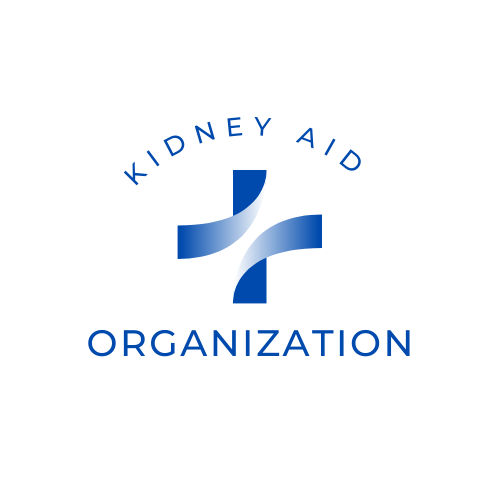Low Protein Fish for Kidney Disease: A Nutritional Solution
As a kidney disease specialist, I am often asked about the best dietary practices for patients with kidney disease. One question that frequently comes up is whether fish, a staple of many diets, is safe for individuals with kidney disease. The good news is that there are options for incorporating fish into the diet of kidney disease patients, and low protein fish can be a great nutritional solution.Understanding Kidney Disease and Dietary Restrictions
Kidney disease is a condition that affects the proper functioning of the kidneys, which are responsible for filtering waste and excess fluid from the blood. When the kidneys are not functioning properly, waste products can build up in the body, leading to a range of health issues. Managing the diet is an essential part of kidney disease treatment, as certain foods and nutrients can exacerbate the condition.
One of the key dietary restrictions for kidney disease patients is limiting protein intake. Protein is an essential nutrient that is typically found in many animal-based foods, including fish. However, in the case of kidney disease, excess protein intake can put a strain on the kidneys, as they have to work harder to filter out the waste products generated by protein metabolism. This is where low protein fish can be a beneficial addition to the diet.
The Benefits of Low Protein Fish
Low protein fish are an excellent source of high-quality protein that can be safely incorporated into the diet of kidney disease patients. These fish contain less protein compared to other types of fish, making them a suitable choice for individuals with kidney disease who need to limit their protein intake.One of the key advantages of low protein fish is that they provide essential amino acids, which are the building blocks of protein, without overloading the kidneys with excessive protein. This allows kidney disease patients to meet their protein requirements without putting additional strain on their already compromised kidneys. Some examples of low protein fish that are safe for kidney disease patients include cod, flounder, sole, and tilapia. These fish are readily available and can be prepared in a variety of delicious ways, making them a versatile and tasty addition to the diet.
Nutritional Benefits of Low Protein Fish
In addition to being a good source of high-quality protein, low protein fish also offer other important nutritional benefits for individuals with kidney disease. These fish are typically low in phosphorus, which is another nutrient that kidney disease patients need to monitor in their diet. High levels of phosphorus can lead to complications in kidney disease, such as bone and heart health issues.Low protein fish can help to keep phosphorus intake in check, while still providing important nutrients. Furthermore, low protein fish are often high in omega-3 fatty acids, which are known for their anti-inflammatory properties. Omega-3 fatty acids have been shown to have a positive impact on cardiovascular health, which is important for individuals with kidney disease, as they are at an increased risk of heart disease. Incorporating low protein fish into the diet can help kidney disease patients maintain a heart-healthy diet.
Lemon Herb Baked Cod
Ingredients:- 4 cod fillets (6 oz each)
- 2 lemons, zested and juiced
- 2 tablespoons fresh parsley, chopped
- 2 tablespoons fresh dill, chopped
- 2 tablespoons olive oil
- Salt and pepper to taste
- Preheat your oven to 375°F (190°C) and line a baking sheet with parchment paper.
- Place the cod fillets on the baking sheet and season with salt and pepper to taste.
- In a small bowl, mix together the lemon zest, lemon juice, parsley, dill, and olive oil to create a marinade.
- Spoon the marinade evenly over the cod fillets, covering them completely.
- Bake the cod in the preheated oven for 12-15 minutes, or until the fish is opaque and flakes easily with a fork.
- Serve hot with a side of steamed vegetables or a kidney-friendly grain, such as quinoa or brown rice.
Tilapia Tacos with Kidney-Friendly Slaw
Ingredients:For the slaw:
- 2 cups green cabbage, finely shredded
- 1 small carrot, grated
- 2 green onions, thinly sliced
- 2 tablespoons apple cider vinegar
- 1 tablespoon olive oil
- 1/2 teaspoon sugar or sugar substitute
- Salt and pepper to taste
- 4 tilapia fillets (4-6 oz each)
- 2 tablespoons cornmeal
- 1 tablespoon paprika
- 1 teaspoon cumin
- 1 teaspoon garlic powder
- Salt and pepper to taste
- Cooking spray
- 8 small corn tortillas
- Fresh cilantro, chopped (optional)
- In a large bowl, combine the shredded cabbage, grated carrot, and sliced green onions to make the slaw.
- In a small bowl, whisk together the apple cider vinegar, olive oil, sugar or sugar substitute, salt, and pepper to create a dressing.
- Pour the dressing over the slaw and toss to coat. Set aside.
- Preheat a non-stick skillet over medium heat.
- In a shallow dish, mix together the cornmeal, paprika, cumin, garlic powder, salt, and pepper.
- Coat each tilapia fillet with the cornmeal mixture, pressing lightly to adhere.
- Spray the preheated skillet with cooking spray and add the coated tilapia fillets.
- Cook the tilapia for 3-4 minutes per side, or until it's cooked through and crispy.
- Warm the corn tortillas in a dry skillet or on a griddle for a few seconds on each side.
- To assemble the tacos, place a few pieces of cooked tilapia on each tortilla, top with a generous scoop of slaw, and garnish with fresh cilantro if desired.
- Serve hot and enjoy your kidney-friendly tilapia tacos!
Incorporating Low Protein Fish into the Diet
Adding low protein fish to the diet of kidney disease patients can be done in a variety of delicious and nutritious ways. Here are some tips for incorporating low protein fish into the diet:- Choose low protein fish: Opt for fish such as cod, flounder, sole, or tilapia, which are low in protein and safe for kidney disease patients.
- Watch portion sizes: Even low protein fish should be consumed in moderation. Consult with a healthcare professional or a registered dietitian to determine the appropriate portion sizes for your individual needs.
- Prepare fish in a kidney-friendly manner: Avoid high-sodium or high-phosphorus seasonings and sauces when preparing low protein fish. Instead, use herbs, spices, and lemon juice to enhance the flavor.
- Incorporate low protein fish in diverse recipes: Low protein fish can be used in a variety of recipes, such as grilled, baked, or broiled fish with fresh herbs and lemon, fish tacos with a kidney-friendly slaw, or fish stir-fry with plenty of colorful vegetables. Get creative in the kitchen to make your low protein fish meals enjoyable and flavorful.
- Monitor your overall protein intake: It's important to keep track of your overall protein intake from all sources, including fish, as well as other foods and supplements. Work with your healthcare provider or a registered dietitian to determine the right amount of protein for your specific needs and stage of kidney disease.
- Follow your healthcare provider's recommendations: It's crucial to work closely with your healthcare provider or a registered dietitian to ensure that your dietary plan is tailored to your specific condition and needs. They can provide personalized recommendations on incorporating low protein fish into your diet based on your individual health status.
Always consult with your healthcare provider or a registered dietitian before making any changes to your diet, and remember to prioritize a well-balanced and individualized approach to managing kidney disease through nutrition. So go ahead, reel in the benefits of low protein fish and cast away any concerns about compromising your kidney health!

